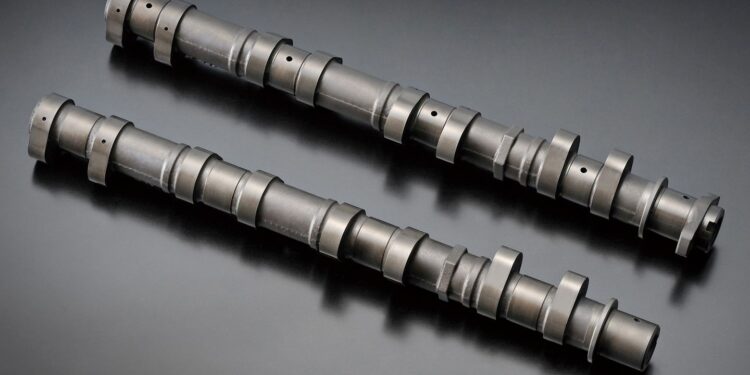Many people wonder what a cam follower in an engine actually does. These small but vital components translate the circular motion of the camshaft into the linear movement needed for valve operation.
Understanding their function helps explain why proper maintenance matters so much. The relationship between cam followers and valve timing becomes clearer when examining how these components work together.
Basic Function and Operation
A cam follower works by maintaining constant contact with the camshaft lobe. This seemingly simple task requires precise engineering to handle high speeds and substantial forces. The follower must slide or roll smoothly while enduring millions of cycles without failing. The precision required in manufacturing reflects the critical nature of these components.
Surface finish and material properties play major roles in reliability. Even microscopic imperfections can lead to premature wear. Modern manufacturing techniques help prevent these problems.
Design Fundamentals
Modern cam followers combine several engineering principles to function properly. The contact surface must remain perfectly smooth while handling tremendous forces. Lubrication plays a critical role in preventing premature wear. Understanding these principles helps explain why proper maintenance matters.
Heat treatment and surface finishing create components that last longer. Different applications require different approaches to these processes. The science behind these treatments continues advancing.
Types and Applications
Different engines use different styles of cam followers. Understanding these variations helps when servicing various engines:
- Common Designs:
- Flat tappet followers
- Roller style followers
- Direct acting types
- Rocker arm mounted
- Hydraulic designs
Each design offers specific advantages for different applications. The choice depends on engine design and operating requirements.
Mechanical Variations
What does a cam follower do beyond basic valve actuation? These components also help control valve timing and lift characteristics. Different designs create different valve movement patterns, affecting engine performance and efficiency. The relationship between design and performance helps guide component selection.
Manufacturing tolerances affect how well these components work. Precision machining ensures proper operation. Quality control prevents problems before they start.
Performance Factors
Several factors affect cam follower performance:
- Critical Elements:
- Surface finish quality
- Material hardness
- Lubrication requirements
- Operating clearances
- Installation accuracy
Understanding these factors helps prevent problems. Regular maintenance addresses many of these concerns.
Material Considerations
The materials used in cam followers must handle extreme conditions. Heat treatment and surface finishing play major roles in durability. Modern metallurgy provides better materials than ever before. Research continues improving these materials.
Surface treatments enhance performance significantly. Various processes improve wear resistance. New technologies offer better protection against wear.
Maintenance Requirements
Regular maintenance helps prevent cam follower problems. Oil changes matter more than many realize, as contaminated oil accelerates wear. Clean oil provides both lubrication and cooling for these components. Understanding these relationships helps explain maintenance schedules.
Oil quality directly affects component life. Contamination causes accelerated wear. Regular changes prevent most problems.
Inspection Procedures
Regular inspections catch problems before they become serious. Unusual noises often provide early warning of developing issues. Visual inspection can reveal wear patterns that indicate potential problems. These simple checks prevent major failures.
Wear patterns tell important stories. Understanding these patterns improves diagnosis. Regular monitoring prevents surprises.
Installation Guidelines
Proper installation prevents many common problems. Clean surfaces and correct measurements ensure proper operation. Taking time during assembly saves money in the long run. The installation process requires both knowledge and patience.
Surface preparation plays a crucial role. Clean components last longer. Proper techniques prevent contamination.
Break-In Procedures
New cam followers need careful break-in procedures. Following manufacturer recommendations prevents premature wear. The first few minutes of operation affect long-term reliability significantly. Attention during this period pays dividends later.
Monitoring during break-in catches problems early. Proper procedures prevent damage. Following specifications ensures success.
Problem Prevention
Most cam follower problems stem from poor maintenance or incorrect installation. Following proper procedures during assembly prevents many issues. Regular inspection catches problems early. Prevention costs less than repair.
Quality control during installation matters greatly. Proper tools make work easier. Regular maintenance prevents most problems.
Common Issues
Wear patterns tell important stories about operating conditions. Understanding these patterns helps prevent future problems. Regular monitoring helps catch issues before they become serious. Early detection saves money.
Oil analysis reveals developing problems. Metal particles indicate wear. Regular testing helps prevent failures.
Performance Applications
High-performance engines place extra demands on cam followers. Racing applications often require specialized materials and designs. Understanding these requirements helps when building or modifying engines. Different applications need different solutions.
Operating conditions affect component selection. Street engines differ from race engines. Climate conditions influence maintenance needs.
Design Improvements
Modern manufacturing creates better cam followers than ever before. Precise machining and improved materials provide longer service life. These advances benefit both street and racing applications. Technology continues improving component quality.
Research leads to better components. Testing proves new designs. These advances help engines perform better.
Operating Characteristics
Cam followers must maintain precise clearances while operating. Temperature changes affect these clearances throughout normal operation. Understanding these changes helps explain why proper adjustment matters. Regular monitoring ensures proper operation.
Operating temperatures affect clearances significantly. Different materials expand differently. These factors influence design choices.
Load Factors
Operating loads vary with engine speed and valve spring pressure. Higher engine speeds create greater forces on followers. Spring pressure directly affects follower loading. Understanding these relationships helps prevent problems.
Different applications create different loads. Understanding these differences helps guide maintenance. Regular inspection prevents failures.
Diagnostic Procedures
Unusual noises often indicate cam follower problems. Different sounds suggest specific issues. Understanding these patterns helps identify problems accurately. Regular monitoring helps catch problems early.
Visual inspection reveals many problems. Wear patterns indicate issues. Regular checks prevent major failures.
Visual Checks
Regular visual inspection reveals developing problems. Wear patterns indicate operating conditions. Surface appearance tells much about component health. Simple checks prevent expensive repairs.
Proper inspection techniques matter greatly. Understanding what to look for helps. Regular checks catch problems early.
Economic Factors
Quality cam followers cost more initially but often save money through longer service life. Cheap parts frequently lead to additional expenses through premature failure or increased maintenance. Understanding these relationships helps justify maintenance expenses.
Labor costs often exceed parts costs. This makes preventive maintenance valuable. Good maintenance practices save money.
Long-Term Value
Better components typically provide better value over time. Reduced maintenance needs offset higher initial costs. Reliability improvements justify quality parts. Operating costs depend on component quality.
Quality differences affect long-term costs. Better parts usually last longer. This relationship makes quality more economical.
Future Technologies
Manufacturing improvements continue advancing cam follower design. New materials and manufacturing methods offer better performance. These advances help engines last longer while performing better. Research continues improving component technology.
New manufacturing methods improve quality. Better materials enhance durability. These advances benefit all applications.
Emerging Trends
Computer modeling helps create better designs. Testing methods become more sophisticated. These advances lead to improved components for all applications. Technology continues advancing design capabilities.
Research improves understanding constantly. Better testing ensures quality. These advances help prevent problems.
Conclusion
Understanding cam followers helps maintain proper engine operation. Regular maintenance prevents most problems. Quality parts and proper installation ensure reliability. Knowledge guides better maintenance decisions.
Proper care saves money through prevention. Quality components provide better long-term value. These practices help engines run better while lasting longer. Good maintenance protects both performance and reliability.













